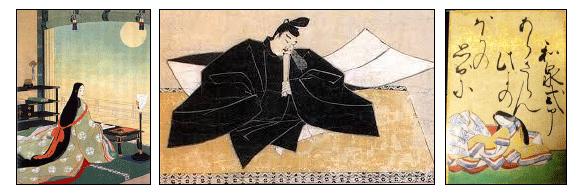Prepositions (More Expressions for Locations)
Content: Prepositions (More Expressions for Locations), There is or There are for
inanimate objects, the Ha line of Hiragana (Ha, Hi, Fu, He, Ho), changing H sounds to B sounds ( Ba, Bi, Bu, Be, Bo) and P sounds (Pa, Pi, Pu, Pe, Po).
Aim: How do we say there is or there are in Japanese?: How do we say there is or there are in Japanese?
New Vocabulary:
Japanese | Romaji | English |
Maえ (まえ) | mae | front |
うしro ろ (うしろ) | ushiro | back, behind |
Miぎ (みぎ) | migi | right |
ひだri (ひだり) | hidari | left |
そば | soba | near |
Yoこ (よこ) | yoko | next to |
あいだ | aida | between |
となri (となり) | tonari | Neighboring, next door |
あrimaす (あります) | arimasu | There is.. |
(バス) | basu | Bus |
Lesson Point:
1. We’ve already covered the following prepositions in the previous lesson: うえ(up / on top)、した(down / under)、なか(inside)、そと(outside) in the previous lesson. Here we will cover more of these expressions.
2. Arimasu: Unlike the word “desu”, Arimasu is a verb and it means “There is” or “There are”. However, Arimasu is only used for inanimate objects and non-living things. Arimasu is usually preceded by the particle “ga” in a sentence. Take a look at these examples: “Kuruma ga arimasu” (There is a car). “Neko ga arimasu” = “There is a cat”.
3. “Ni” Particle: The particle “ni” has several uses; but, for this lesson, we will focus on how it is used with prepositions. “Ni” often follows a preposition to indicate location. So you might want to think of it like the English word “at”. For example: うえにへyaがあrimaす(Ue ni heya ga arimasu) literally means “At the up(stairs), there is a room.” Note that in this case, the placement of “ni” follows the preposition but comes before subject. Another way “ni” is used in the same sentence is: へやはうえにあrimaすHeya wa ue ni arimasu (The room is upstairs). In this case “ni” replaces the “ga” particle that we discussed previously.
4. Particle Wa= is written as”は” in Hiragana: If you write a sentence in Japanese that includes the particle “wa”. It is written using the hiragana for “Ha” or “は” and not the Hiragana for the sound “Wa” or “わ”. Don’t ask – that’s just the way it is.

Sample Sentences:
いすのうえにほnがあrimaす。(There is a book on the chair.)
Isu no ue ni hon ga arimasu
いすのmaえにほnがあrimaす。(There is a book in front of the chair.)
Isu no mae ni hon ga arimasu
Waたしのmiぎにくrumaがあrimaす。(There is a car on my right side.)
Watashi no migi ni kuruma ga arimasu
Waたしのひだりにくrumaがあrimaす。(There is a car on my left side.)
Watashi no hidari ni kuruma ga arimasu
あなたのそばにいすがあrimaす。(There is a chair near you.)
Anata no soba ni isu ga arimasu.
あなたのyoこにちずがあrimaす。(There is a map next to you.)
Anata no yoko ni chizu ga arimasu.
あなたとwaたしのあいだにいすがあrimaす。(There is a chair between you and I.)
Anata to watashi no aida ni isu ga arimasu.
いすのあいだにほnがあrimaす。(There is a book between the chairs.)
Isu no aida ni hon ga arimasu.
Basuのとなりにくrumaがあrimaす。(There is a bus next to a car.)
Basu no tonari ni kuruma ga arimasu.

| S-7-1 |
II. Mini-Quiz: (Test your knowledge):
Fill in the missing particles in each sentence in the blanks and then write the English meaning in the space provided.
1. Isu ____ mae _____ hon ______ arimasu.
______________________________________________
2. Watashi ____ migi _____ kuruma ______ arimasu.
______________________________________________
3. Ana _____ kuruma ______Watashi ____ hidari ______ arimasu.
______________________________________________
4. Shita _____ isu ______ arimasu.
______________________________________________
5. Anata _____ yoko _____ chizu _____ arimasu.
______________________________________________
Quiz Answers:
1. no, ni, ga
2. no, ni, ga
3. no, ga, no, ni
4. ni, ga
5. no, ni, ga
III. Writing Practice: Hiragana (Ha, Hi, Fu, He, Ho)

Coverting H sounds to B sounds (Ba, Hi, Fu, He, Ho):
B sounds are made the same way we made G, Z, and D sounds are made from the “Ka”, “Sa”, and “Ta” lines. Except for the B sounds we use the “Ha” line and add the tenten mark to each one. See the examples below.
Coverting H sounds to P sounds (Pa, Pi, Pu, Pe, Po):
P sounds are made the same way we make B sounds from the “Ha” line. Except in the case of P sounds a small circle like the degree symbol “˚” is placed next to the hiragana to make the P sound for each one. See the examples below.

Practice writing the following words in Hiragana
1. Trade – Boeki - _________________________
2. To Fly - Tobu - ________________________
3. Explosion – Bakuhatsu - ________________________
4. Boat – Fune - __________________________
5. Short (Opposite of tall) - Hikui - ___________________________
6. Green Pepper – Pima - __________________________
7. Jewelry – Hoseki - __________________________________
8. Snake – Hebi - ____________________________________
